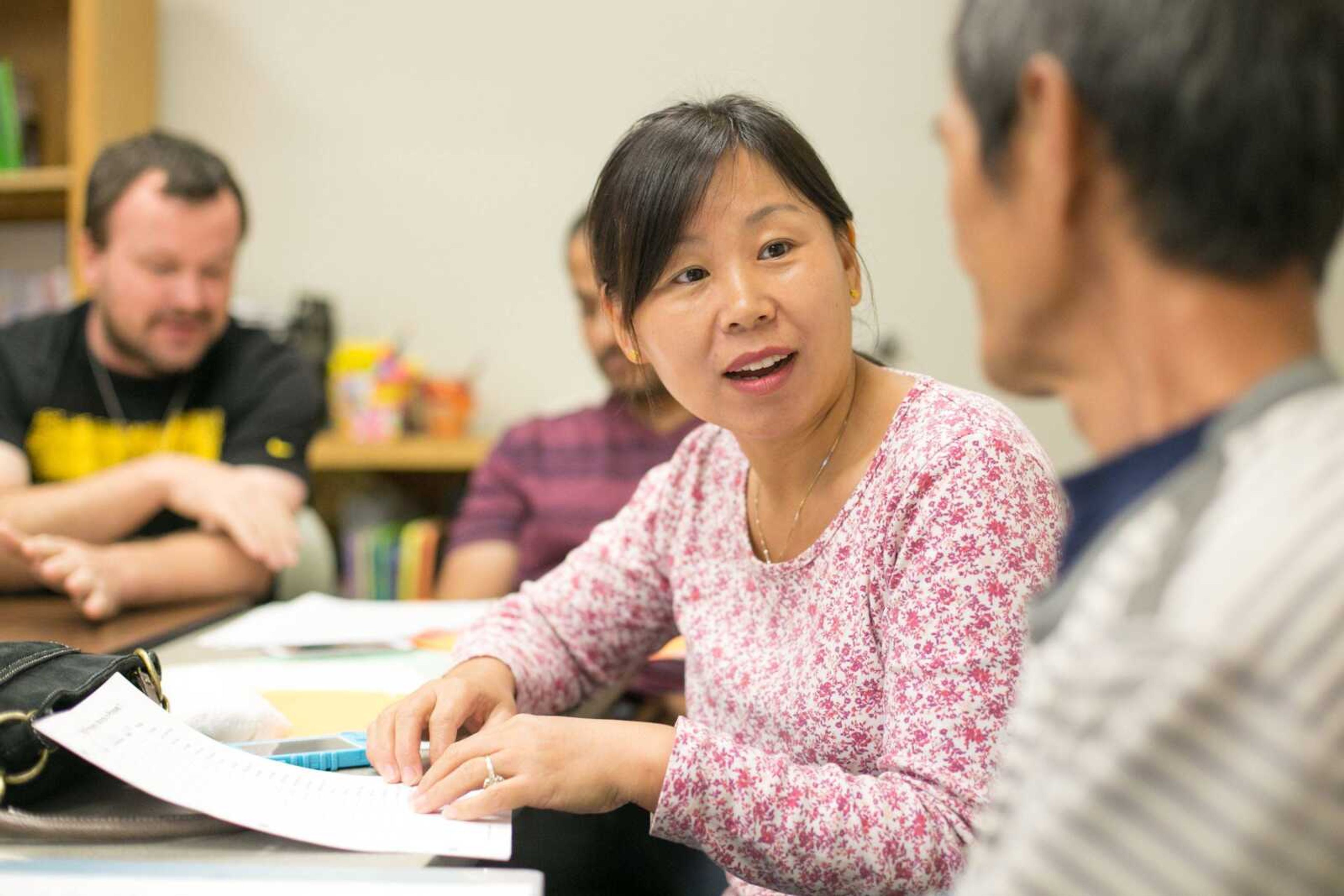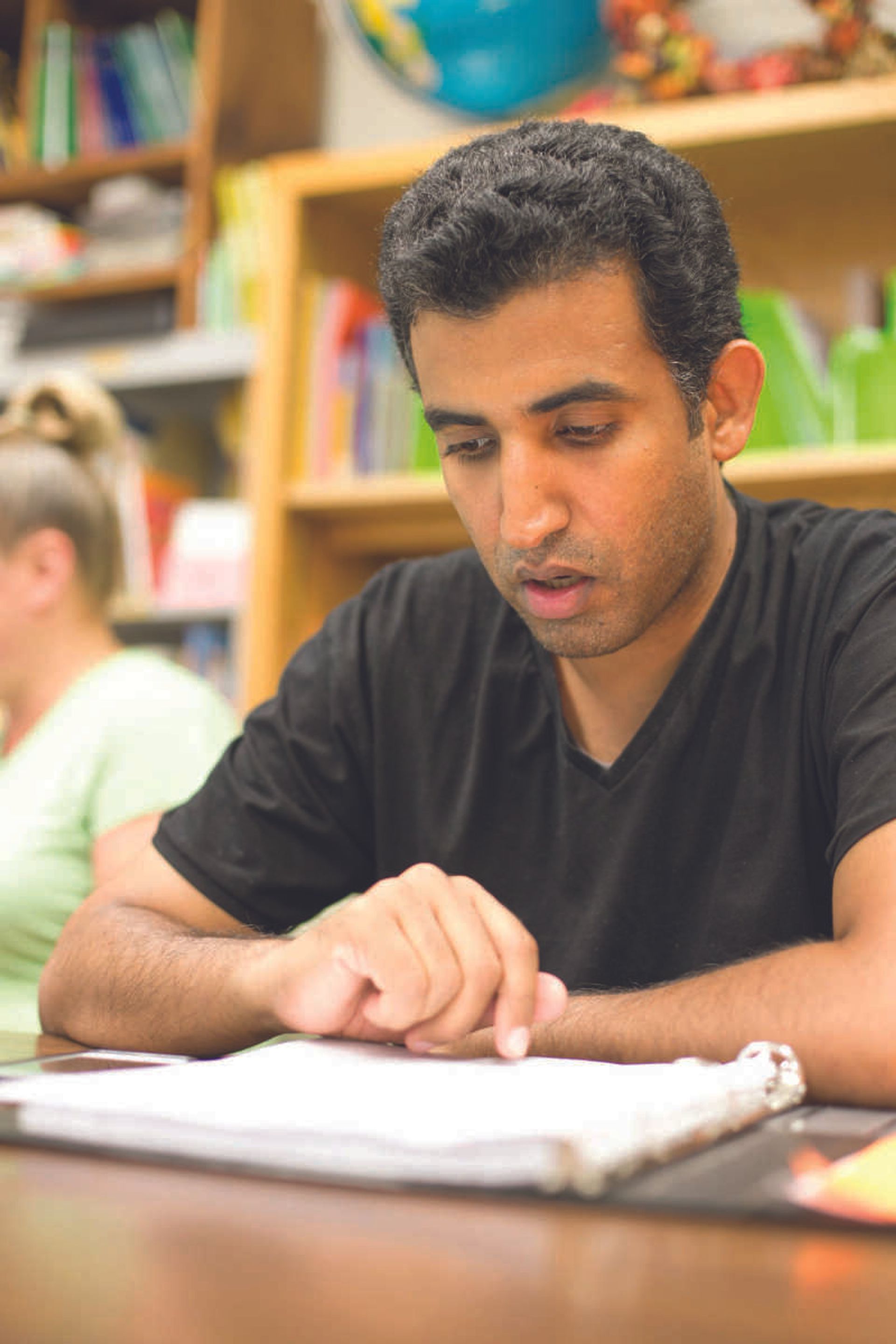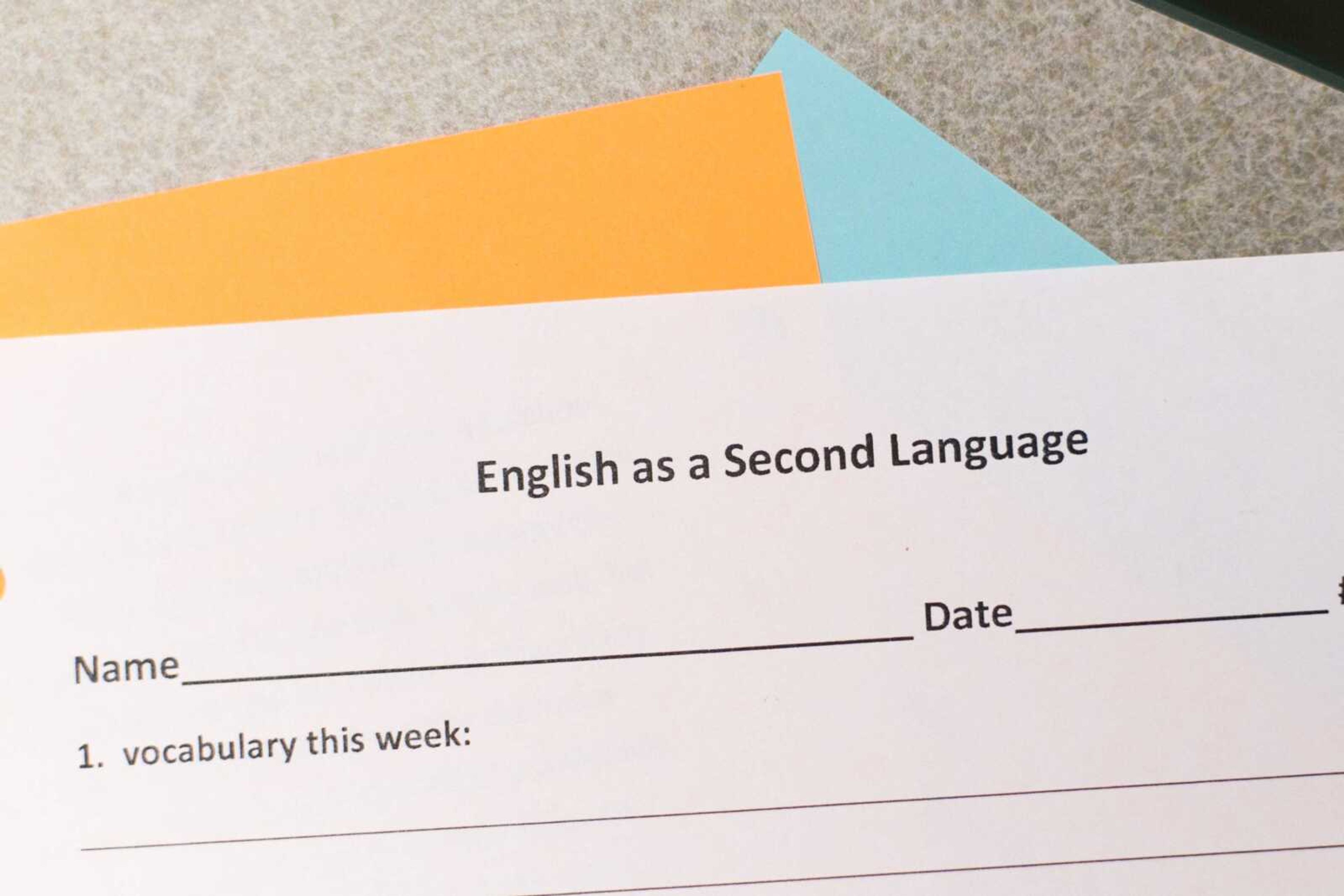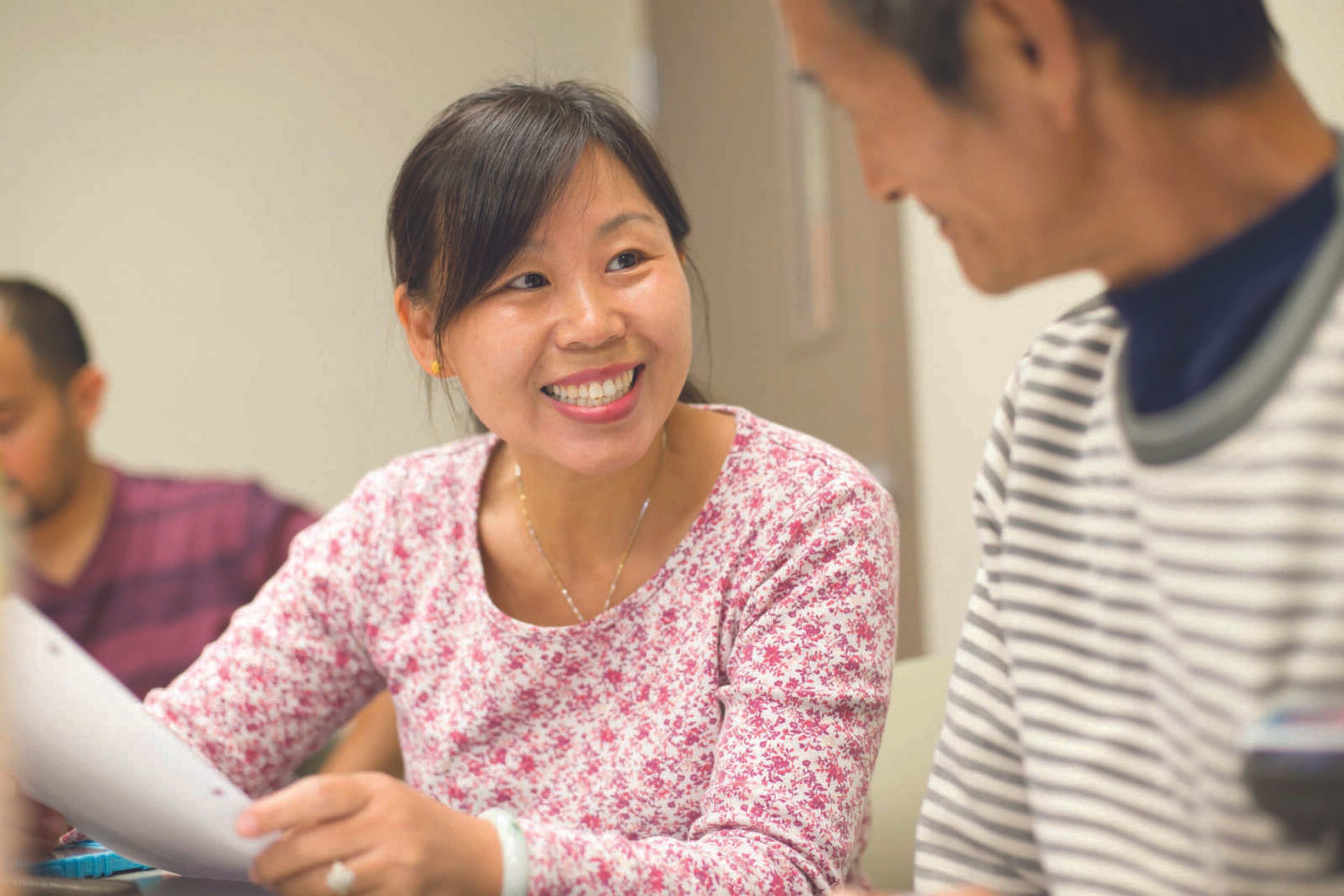In the know: Language classes available for all ages and levels in Southeast Missouri
Parlez-vous anglais? *¿Habla usted Ingles? Sprechen sie Englisch? For 136 Cape Girardeau school students, English isn't necessarily their primary language; in fact, beyond English, district students speak 17 languages. That's a challenge for Sarah Hanf, teacher of English language learning at Jefferson and Blanchard Elementary schools. She's one of four ELL teachers in the district...
Parlez-vous anglais?
*¿Habla usted Ingles?
Sprechen sie Englisch?
For 136 Cape Girardeau school students, English isn't necessarily their primary language; in fact, beyond English, district students speak 17 languages. That's a challenge for Sarah Hanf, teacher of English language learning at Jefferson and Blanchard Elementary schools. She's one of four ELL teachers in the district.
"When you know a second language, you have an advantage -- it's a blessing, but it's not. A child essentially has to rearrange what they already know," Hanf says, explaining that family surveys tell the school the degree to which English and another language may be used in a home. Once a child's English proficiency is assessed, teachers can determine what level of support a child might need in the classroom.

"It takes three to five years to have basic oral proficiency in English. To develop academic language to navigate the school environment takes four to seven years. You can't just learn overnight," Hanf says.

"Children are more malleable," Hanf adds, in comparing younger language-learners with their grown-up counterparts.
"Generally speaking, the idea that younger is better is true when it comes to learning languages," Warren D. Anderson, professor of anthropology at Southeast Missouri State University, says, adding theories about language development are evolving with advancements in neuroscience, psychology and other disciplines.
"Beyond the plasticity of the brain and how it takes in information and processes it, there's a psychological aspect of this, too," Anderson says. "As kids age, their egos get in the way. They don't want to appear silly or foolish by not being able to communicate. There's a healthy element of that in younger kids' learning. Not only are their brains plastic, socially and psychologically they're less bothered by not being able to speak."
Anderson explains learning of a second language takes place in either of two ways: simultaneous or sequential.

Simultaneously learning two languages -- perhaps with a mother speaking predominantly Arabic and a father speaking mostly Spanish -- "with young kids seems absolutely unproblematic," Anderson says.
More difficult, but not impossible, is sequentially adding a second language after immersion in a first, as is the situation with the 136 non-English speaking children entering classrooms in Cape Girardeau.
Students may pass through four stages: using their first or native language although others don't understand them; silence because their attempts are embarrassing; using rudimentary phrases of the new language; and, finally, using the new language to express themselves.
Anderson offers this encouragement to older language learners: "Yes, earlier is better, but later is not prohibitive. Let me stress, there are plenty of adults who learn languages to a great degree of sophistication and nuance."
Southeast offers bachelor's degrees in German, French and Spanish, and also offers instruction in the Japanese and Chinese languages.
Beyond that, through Southeast Online, the university's web-based instruction portal, the university offers certification in English for Speakers of Other Languages, which allows teachers to enhance their ability to address the needs of limited-English-proficient children in kindergarten through 12th grades. The Missouri Department of Elementary and Secondary Education established the certification requirements.
The Continuing Education Department at Three Rivers Community College in Poplar Bluff, Missouri, offers community conversational Spanish classes, which are geared toward health-care providers and community service workers to allow them to better communicate with Spanish-speaking clients.
About 65 people pass through the English as a Second Language classes offered each year by the Cape Girardeau Career and Technology Center, says Becky Atwood, adult education and literacy coordinator. The student population is diverse and varies; one year there may be a preponderance of Asian students, while the next may see an uptick in native Spanish speakers.
Minimum age for the classes is 17. The classes are free, with both day and evening sessions. A conversation hour, from 4:30 to 5:30 p.m. Wednesdays, provides students the opportunity to practice their English. "The class size is variable and fluid throughout the year. We like to keep it small; otherwise the more reticent speakers will get lost," Atwood says.
"Learning English is a lifetime process. It's more than grammar and vocabulary. Language is culture, and that's complex. For many, it's learning how to function in western culture and society," Atwood says.
Also available through the CTC is instruction in American Sign Language.
"ASL is the third most commonly used language in the United States, next to English and Spanish," says Naida Roscovius, ASL instructor. "It is not English on the hands."
Roscovius says the class, geared for beginners, covers the "basics of ASL vocabulary, grammar and deaf culture. As with any language, it takes years to become proficient."
The current class has 11 students, "adults from different backgrounds *.... Parents, teachers, a firefighter and friends who want to learn ASL," Roscovius says.
Bridgett Holbrooks, teacher of the deaf in the Cape Girardeau School District, says, "ASL is its own language."
Among five schools in the district are 14 deaf students in fourth through 12th grades. Holbrooks says most are moderately to severely or profoundly deaf; some have cochlear implants, and some wear hearing aids.
"The parents of some of our students don't sign [use American Sign Language]. Sometimes, with our students, we have to help the kids overcome what happens at home," Holbrooks says. "If we don't keep signing with them, they may have no speech at all."
Connect with the Southeast Missourian Newsroom:
For corrections to this story or other insights for the editor, click here. To submit a letter to the editor, click here. To learn about the Southeast Missourian’s AI Policy, click here.










